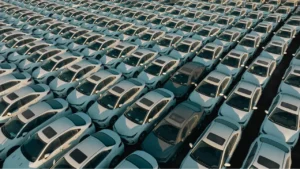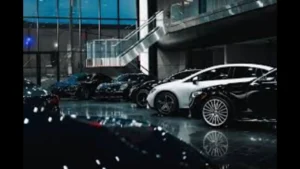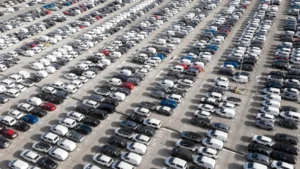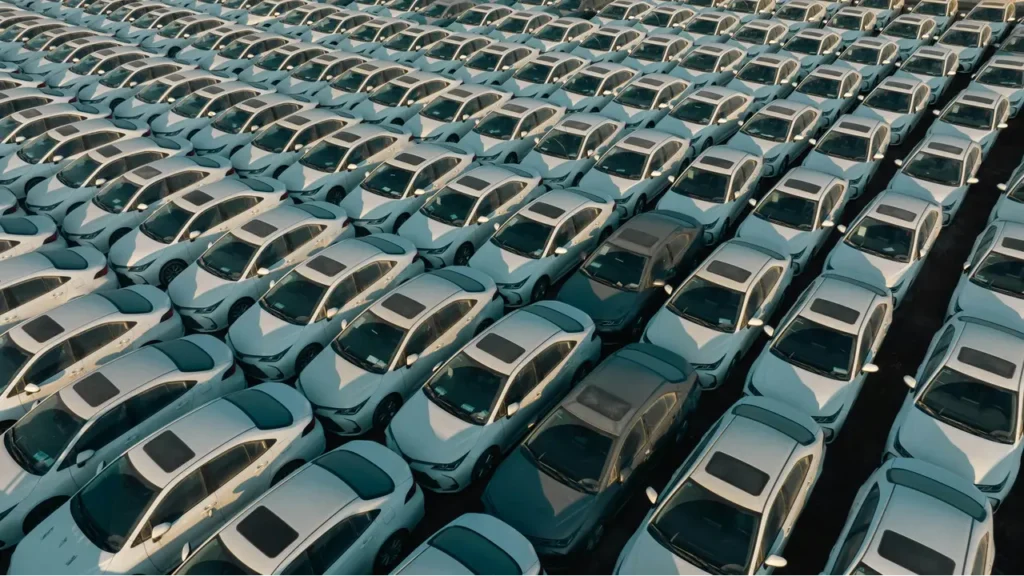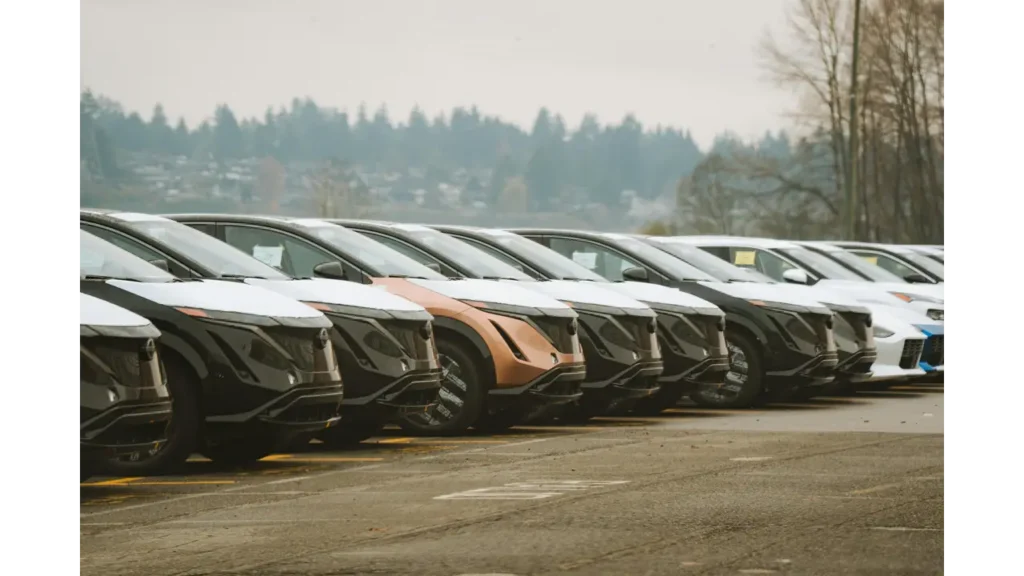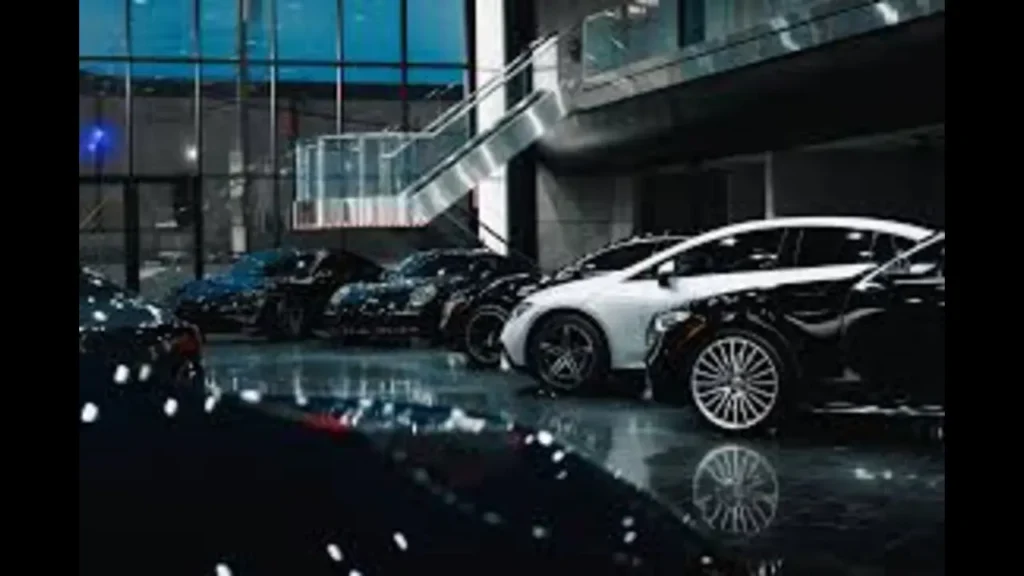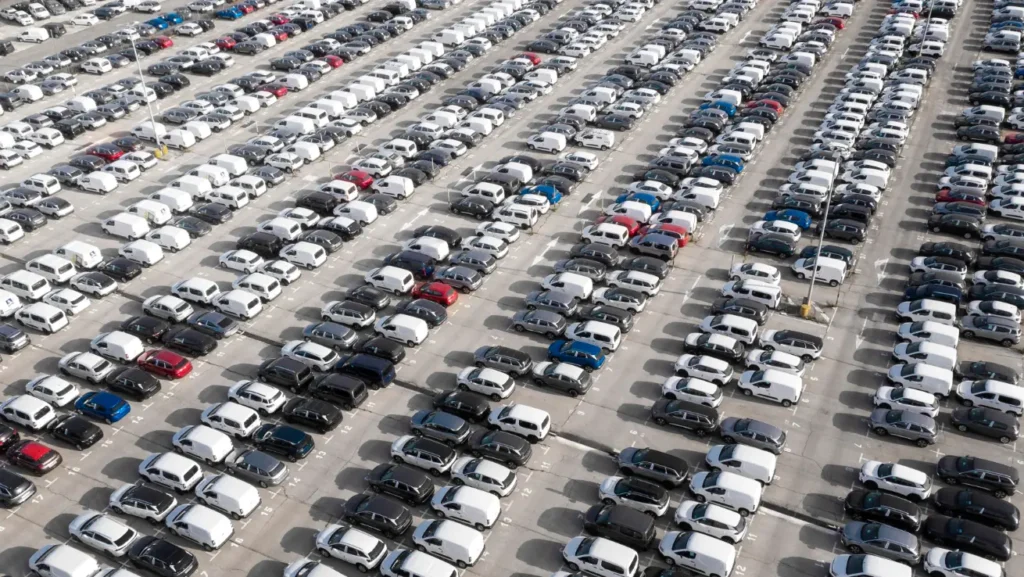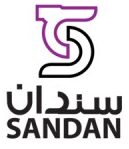Introduction
Choosing the right car in Oman is not simply about picking a brand or model. The decision involves aligning a vehicle’s purpose, cost, and technical specifications with the country’s diverse driving conditions. Oman’s roads range from smooth city highways in Muscat to rugged desert tracks in Al Wusta and Dhofar, making suitability a decisive factor. Climate, fuel prices, resale value, and after-sales service networks also shape how buyers evaluate their options.
For many, the question starts with identifying what kind of driver they are: daily commuter, family traveler, off-road adventurer, or commercial user. Then comes the financial perspective—deciding between a new or used car, calculating running costs, and assessing long-term value. The Omani automotive landscape offers both ends of the spectrum, with certified new cars from dealerships and diverse used options across dealer clusters such as the Sandan Industrial City in Muscat. Sandan’s growing used car market provides a reliable environment where inspections, documentation, and financing can be completed in one location—an attractive advantage for informed buyers.
This guide explores the complete process of choosing a car in Oman, detailing how to define needs, compare options, and make financially sound choices. Whether purchasing a brand-new SUV for family use or a used sedan for daily commuting, understanding the country’s unique market conditions is key to finding the right match.
Key Takeaways / TLDR
- Car selection in Oman should align with driving environment, usage, and financial priorities.
- Budgeting should include long-term costs such as insurance, maintenance, and depreciation.
- The Sandan Industrial City in Muscat serves as a major hub for both new and used car purchases.
- GCC-spec vehicles are better suited to Oman’s hot climate and have higher resale value.
- A well-defined use-case is the foundation for choosing the right car segment.
Table of Contents
Assessing Your Needs: Define Use-Case and Budget
The first step in selecting the right car in Oman is identifying the specific purpose behind the purchase. Each driving condition across the Sultanate demands different capabilities from a vehicle. For instance, compact sedans suit urban commutes in Muscat, where traffic density and parking availability matter more than horsepower. Families often prefer midsize SUVs that balance comfort with safety features. For those living in or frequently visiting desert regions, a 4×4 vehicle with strong suspension and ground clearance is nearly essential.
Budget assessment goes beyond the initial purchase price. Buyers need to evaluate registration fees, insurance, periodic inspection costs, fuel consumption, and maintenance availability. Oman’s fuel prices are competitive, but high engine displacement can still drive expenses upward. Used car buyers should factor in potential repair costs and verify service histories to avoid hidden issues.
Balancing long-term goals also influences the budget decision. Those intending to keep a car for more than five years may benefit from purchasing new, while short-term users, such as expatriates or students, might find better value in certified used cars. Evaluating ownership horizon ensures the decision matches both financial capability and intended usage duration.
Defining these parameters clearly sets the framework for all subsequent decisions, making the process structured and rational rather than emotional or impulsive.
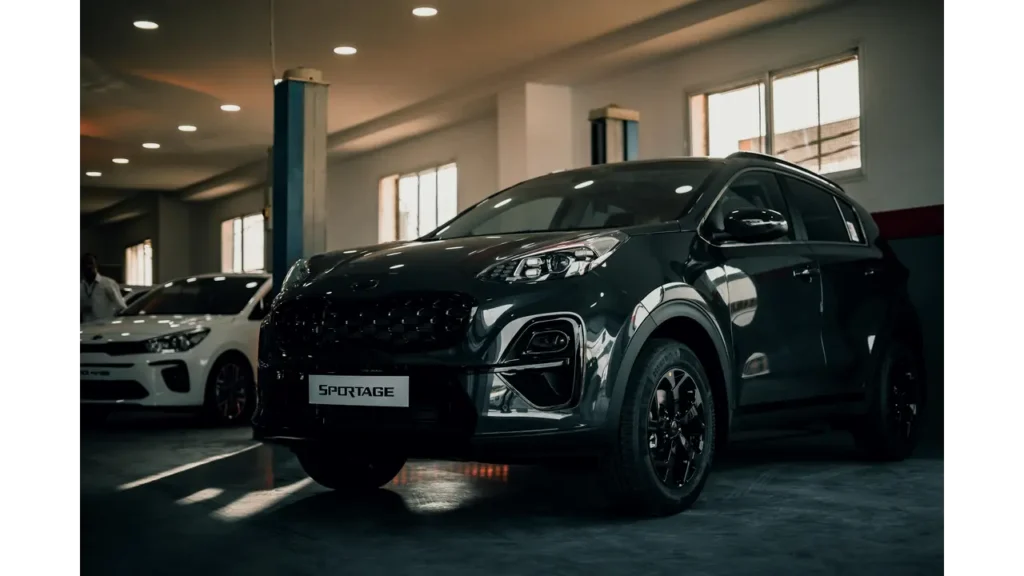
New vs Used: Comparative Decision Framework
Choosing between a new or used car in Oman involves comparing benefits, risks, and long-term financial outcomes. New cars offer the comfort of factory warranties, modern safety technologies, and hassle-free maintenance schedules through authorized dealerships. They are ideal for buyers seeking reliability and long ownership cycles. However, depreciation is sharpest in the first three years, reducing resale value significantly.
Used cars, on the other hand, present a strong financial case. The Omani used car market, particularly within clusters like Sandan Industrial City, features extensive inventories ranging from nearly new models to older, budget-friendly vehicles. Buyers can save significantly on upfront cost and still access vehicles with acceptable mileage and warranty extensions. The trade-off lies in potential repair needs and reduced warranty coverage, which makes inspection essential before purchase.
In Oman, additional considerations include VAT, registration fees, and periodic inspection for vehicles older than ten years. When these costs are weighed against depreciation, used cars often offer a better total cost of ownership for shorter ownership periods. However, for long-term value and consistent reliability, new cars may still justify their higher initial price.
Dealer clusters like Sandan mitigate much of the risk associated with used cars by offering inspection, financing, and paperwork support in one place. This creates a more transparent buying environment compared to private sellers, giving confidence to buyers who want a balance between cost savings and reliability.
Specification Matters: Matching Engine, Fuel Type, and Terrain
Vehicle specifications play a decisive role in determining how well a car performs in Oman’s varying conditions. Engine capacity, drivetrain configuration, and fuel type directly influence usability, efficiency, and long-term maintenance costs. Understanding these attributes ensures the chosen car aligns with the driving environment and intended purpose.
For city use in Muscat or Sohar, compact cars with smaller engines (1.2L–1.6L) provide efficient performance and easier handling. These vehicles are also cheaper to insure and maintain. In contrast, intercity commuters or frequent travelers along the Muscat–Salalah route benefit from mid-range engines (1.8L–2.5L) that provide more power for long-distance driving without excessive fuel consumption.
Buyers intending to explore Oman’s rugged desert and mountain regions should prioritize 4×4 systems and higher torque engines, typically in the 3.0L–4.0L range. The drivetrain choice—whether rear-wheel, front-wheel, or all-wheel—determines traction and stability, especially in off-road or slippery conditions.
Fuel type also affects cost and performance. Petrol cars dominate the consumer segment for their availability and smoother operation, while diesel vehicles are preferred by fleet owners or off-road users who value torque and fuel economy. Hybrid and electric models are gradually entering Oman’s market, supported by growing infrastructure in urban centers.
Matching specifications with actual usage prevents overpaying for underutilized features or underpowering the vehicle for its terrain. A clear understanding of these relationships ensures the buyer selects a car capable of handling Oman’s climate and topography efficiently.
Evaluating Vehicle Condition and History
For used car buyers, verifying the condition and service history of a vehicle is critical to ensure both performance and safety. The process begins with confirming authenticity through the Royal Oman Police’s vehicle registration database, which provides official ownership records and accident history. Reliable dealers, such as those operating in Sandan Industrial City, typically offer transparent documentation, reducing the risk of hidden liabilities.
Mechanical inspection should include an evaluation of the engine, transmission, suspension, and electrical systems. Wear indicators such as uneven tire tread, fluid leaks, or engine noise often reveal underlying mechanical stress. Buyers should also check the chassis and underbody for corrosion or signs of collision repair, especially for vehicles imported from regions with higher humidity or flooding risks.
Interior condition, odometer accuracy, and service book stamps add further confidence. Cars with complete maintenance records from authorized service centers generally carry higher resale value. Independent inspection services at Sandan provide professional assessments, using diagnostic tools to verify sensor functionality and emission compliance.
A verified history not only protects the buyer from potential fraud but also supports future resale by maintaining the vehicle’s credibility. Transparency in this stage often distinguishes reputable sellers from informal market operators.
Calculating Total Cost of Ownership
Choosing the right car in Oman involves evaluating not just the purchase price but the total cost of ownership (TCO). This calculation includes fuel consumption, insurance premiums, routine maintenance, depreciation, and unexpected repair costs. Understanding TCO ensures the chosen vehicle remains financially sustainable throughout its ownership cycle.
Fuel costs in Oman remain affordable compared to many regions, but consumption varies widely by engine type and vehicle weight. Compact sedans typically average 14–18 km/l, while large SUVs often achieve only 7–10 km/l. Over five years, this difference can significantly affect total expenses.
Insurance premiums depend on the vehicle’s value, age, and engine capacity. Comprehensive coverage for a new mid-range sedan might range between OMR 120–180 annually, while luxury or high-performance cars can exceed OMR 300. Buyers should also factor in annual registration fees and vehicle inspection costs for older models.
Depreciation remains the largest invisible expense. New vehicles lose around 15–25% of their value in the first year, stabilizing after three years. Choosing popular brands such as Toyota, Nissan, or Mitsubishi ensures stronger resale value due to established service networks and demand in Oman’s used market.
Sandan Industrial City plays an important role in mitigating TCO. Its ecosystem allows buyers to access affordable maintenance workshops, spare parts, and insurance providers in one location, reducing long-term operational costs. When these savings are combined with proper selection and maintenance, total ownership becomes predictable and manageable.
Comparing Car Brands and Models in Oman
Oman’s car market presents a wide selection of global brands, each with distinct advantages that align with specific buyer priorities. Choosing the right car involves comparing reliability, resale value, service availability, and suitability for local conditions. The most common choice parameters include durability in high temperatures, maintenance affordability, and long-term performance in mixed terrains.
Japanese brands such as Toyota, Nissan, and Mitsubishi dominate Oman’s market for their proven reliability and accessible spare parts. Toyota’s Land Cruiser and Prado are favored for off-road endurance, while models like the Corolla and Yaris excel in urban efficiency. Nissan’s Patrol remains a top choice for desert and mountain driving, balancing power with comfort. Mitsubishi’s Pajero and Outlander continue to attract family buyers seeking versatility without excessive fuel use.
Korean manufacturers such as Hyundai and Kia have strengthened their presence with models like the Tucson, Sportage, and Elantra. These cars appeal to mid-range buyers, offering advanced infotainment systems and strong warranty coverage. Their competitive pricing and solid after-sales support make them a practical choice for first-time car owners.
European brands, including BMW, Mercedes-Benz, and Volkswagen, cater to premium buyers seeking luxury and performance. While higher in maintenance costs, these vehicles deliver advanced safety features and driving comfort, which attract professionals and expatriates.
Emerging Chinese brands like MG, Geely, and Changan are rapidly gaining market share in Oman, providing affordability with upgraded design and technology. Their competitive warranties and partnerships with local service centers increase their appeal to cost-conscious consumers.
Sandan Industrial City showcases a concentrated presence of multi-brand dealerships, enabling buyers to compare specifications, test-drive options, and access certified used models in one location. This accessibility simplifies brand evaluation, ensuring informed decision-making across all budget segments.
Buying Channels and Dealership Insights in Oman
The process of buying a car in Oman can be approached through multiple channels: authorized dealerships, certified used car outlets, and private sellers. Each option offers specific benefits, and understanding the distinctions helps buyers reduce risks and maximize value.
Authorized dealerships provide new vehicles with factory warranties, financing options, and after-sales support. These showrooms often collaborate with banks and insurers, streamlining purchase and registration procedures. Buyers choosing this route benefit from predictable costs and certified service standards, making it ideal for long-term ownership.
Certified used car centers, such as those located within Sandan Industrial City, offer a middle ground between affordability and assurance. Vehicles undergo inspection and verification before listing, ensuring buyers receive transparent documentation and quality guarantees. Sandan’s ecosystem further includes financing partners and registration offices, enabling the entire transaction to be completed in a single visit.
Private sellers generally offer lower prices but pose higher risks due to inconsistent maintenance records and limited recourse in case of hidden defects. Buyers opting for private transactions should always request full service histories, conduct mechanical inspections, and verify ownership with the Royal Oman Police database.
With Oman’s car market becoming increasingly digital, online listings and dealership websites now allow preliminary comparisons of prices, models, and financing plans. Still, physical inspection remains indispensable, particularly for used cars where actual condition can vary significantly from online listings.
Sandan’s structure bridges these channels, integrating both new car dealerships and pre-owned specialists under one regulatory environment, helping buyers navigate multiple options with confidence and security.
How Sandan Industrial City Supports Smart Car Buying Decisions
Sandan Industrial City in Muscat represents a new model for automotive commerce in Oman, combining sales, services, and support within one centralized location. Designed as a comprehensive industrial and commercial hub, Sandan brings together car dealerships, workshops, inspection centers, and insurance offices, creating a streamlined ecosystem for buyers.
For individuals comparing vehicles, Sandan offers immediate access to multiple brands, including authorized and used car dealers. This environment encourages transparent competition, enabling buyers to evaluate price differences, warranties, and condition reports side by side. Many dealerships at Sandan also collaborate with financial institutions, providing instant loan approval and on-site vehicle registration.
The presence of maintenance workshops and spare parts suppliers within the complex adds another layer of convenience. Buyers can verify technical aspects, schedule pre-purchase inspections, and plan long-term maintenance before finalizing the purchase. This integration of sales and service reduces the fragmentation typically associated with car buying in separate locations.
Sandan’s layout also benefits used car buyers seeking reliability. Dealers operating within the complex must comply with regulatory requirements regarding documentation, ownership verification, and inspection transparency. This accountability creates a safer environment for transactions compared to informal markets.
For Oman’s growing automotive sector, Sandan Industrial City symbolizes a shift toward structured, customer-centered mobility solutions. By merging infrastructure, trust, and efficiency, it has become one of the most influential automotive destinations in the Sultanate—where informed decision-making and reliable service align to support the modern car buyer.
Long-Term Maintenance and Resale Strategy
Owning a car in Oman involves consistent maintenance planning and strategic thinking about future resale value. Regular servicing, proper documentation, and mindful driving habits directly influence how much value a vehicle retains over time. The hot climate, long-distance travel, and occasional off-road conditions in Oman make preventive care especially crucial.
Adhering to manufacturer service schedules is the foundation of vehicle longevity. Timely oil changes, brake checks, and cooling system maintenance are vital due to Oman’s high temperatures, which can accelerate wear on components. Choosing authorized or certified workshops ensures the use of genuine parts and maintains warranty validity. Locations like Sandan Industrial City simplify this process, offering multiple service centers and spare part suppliers within a single complex.
Resale value depends heavily on brand perception, mileage, and maintenance consistency. Japanese vehicles such as Toyota, Nissan, and Mitsubishi typically hold the strongest resale positions due to their proven reliability and affordable servicing. Recording all maintenance in an official service log, keeping receipts, and performing periodic detailing can add measurable value when selling.
Condition is not the only resale determinant; market timing and presentation also matter. Listing vehicles before major model updates or during high-demand periods, such as pre-Ramadan, often yields better offers. Sandan’s integrated used car market allows vehicle owners to receive professional valuations and connect with potential buyers directly, streamlining the resale process.
By maintaining transparency and prioritizing upkeep, vehicle owners can extend their car’s lifespan while minimizing depreciation impact—a practical strategy for Oman’s climate and market dynamics.
Emerging Automotive Trends in Oman
Oman’s automotive sector is undergoing rapid transformation as global mobility trends and local infrastructure projects reshape consumer behavior. The shift toward sustainable transportation, digital connectivity, and integrated service ecosystems defines the future of car ownership in the Sultanate.
Electric and hybrid vehicles are gaining gradual traction, supported by new charging infrastructure in Muscat and key urban centers. Government initiatives promoting cleaner energy align with Oman Vision 2040, encouraging the adoption of low-emission mobility solutions. Although traditional fuel vehicles dominate the market, growing awareness and technological accessibility are driving consumer interest toward sustainable options.
Digital transformation is equally significant. Online platforms for vehicle comparison, virtual showrooms, and AI-assisted financing are becoming standard tools for informed buyers. Insurers and dealerships now use digital identity verification (e-KYC) and instant policy generation, accelerating the car purchase process.
Advanced driver-assistance systems (ADAS), smart dashboards, and connected services are also influencing purchase decisions. Buyers increasingly prioritize safety features such as adaptive cruise control, lane assist, and blind-spot detection—technologies once limited to premium models but now standard across many brands.
Industrial developments like Sandan play a pivotal role in accommodating these trends. The city’s infrastructure supports both electric and conventional vehicle services, positioning it as a strategic hub for next-generation automotive commerce. As Oman continues to diversify its economy, the convergence of digitalization, sustainability, and service integration will define the country’s evolving car market.
FAQs about Choosing the Right Car in Oman
1. What factors should be considered when choosing a car in Oman?
Buyers should evaluate usage type, driving environment, maintenance costs, and resale value. Terrain and climate suitability are also crucial.
2. Are GCC-spec cars better for Oman’s conditions?
Yes. GCC-spec vehicles are designed to handle high temperatures and desert conditions, ensuring longer lifespan and fewer mechanical issues.
3. Is it better to buy a car new or used in Oman?
New cars suit long-term owners seeking warranty coverage, while used cars provide better short-term value. Certified dealers, especially at Sandan, reduce risk in used car purchases.
4. What is the best time to buy a car in Oman?
Promotional periods such as Ramadan and end-of-year sales often offer significant discounts, financing benefits, and free insurance packages.
5. How does Sandan Industrial City simplify car buying?
Sandan combines dealerships, workshops, financing, and insurance in one place, enabling transparent, secure, and time-efficient transactions.
Conclusion
Selecting the right car in Oman involves a structured understanding of purpose, performance, and practicality. Each decision—from defining the use-case to comparing specifications—shapes long-term satisfaction and financial sustainability. The country’s environment demands vehicles capable of handling both heat and terrain, making reliability and adaptability key factors in every purchase.
Sandan Industrial City stands out as a cornerstone in this process, offering a centralized automotive ecosystem that simplifies selection, financing, and after-sales care. Its integration of dealerships, workshops, and insurance providers provides buyers with transparency and efficiency unmatched in conventional markets.
As Oman’s automotive industry continues to align with global trends—electrification, data-driven decision-making, and consumer-focused service models—the importance of choosing wisely grows even more pronounced. The right car is no longer just a means of transport; it is an investment in comfort, safety, and long-term value within an evolving economic landscape.


